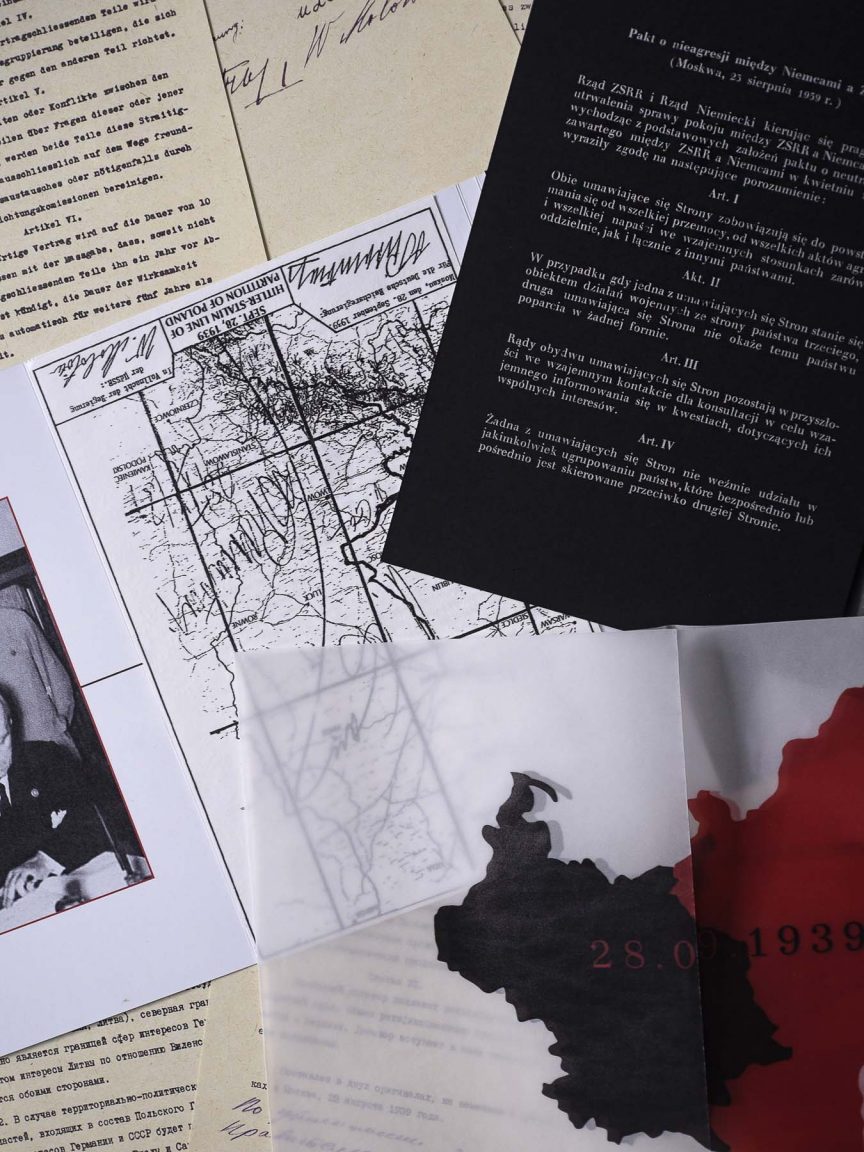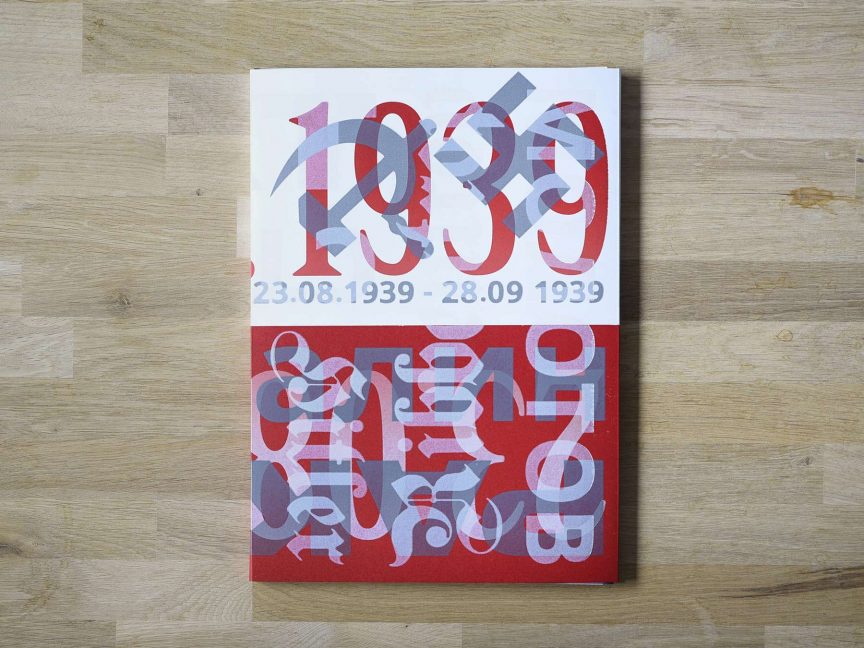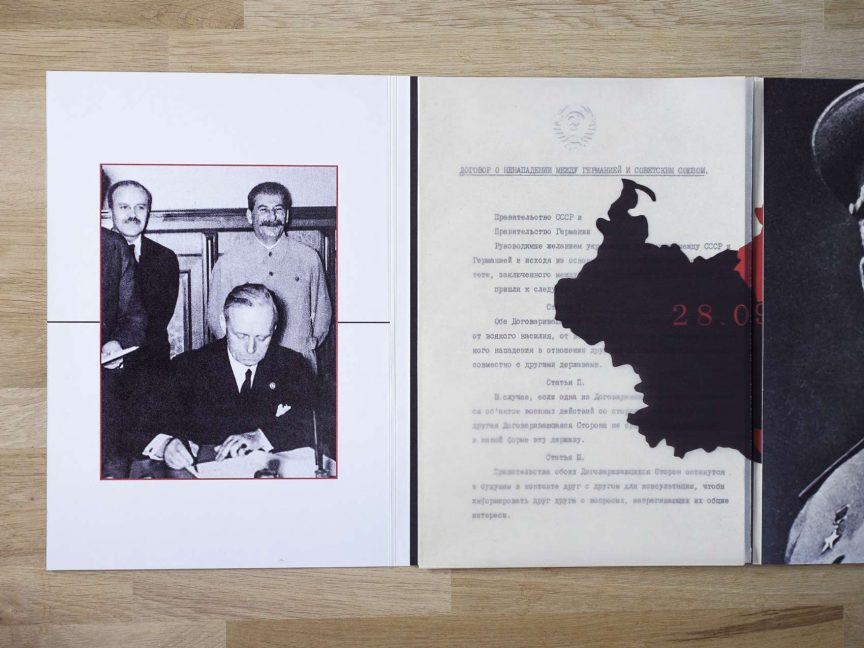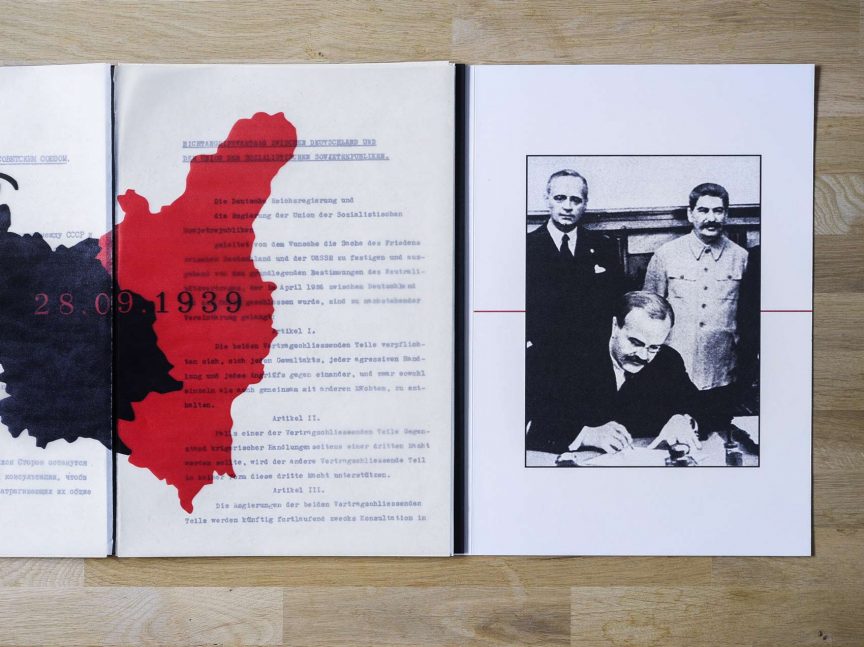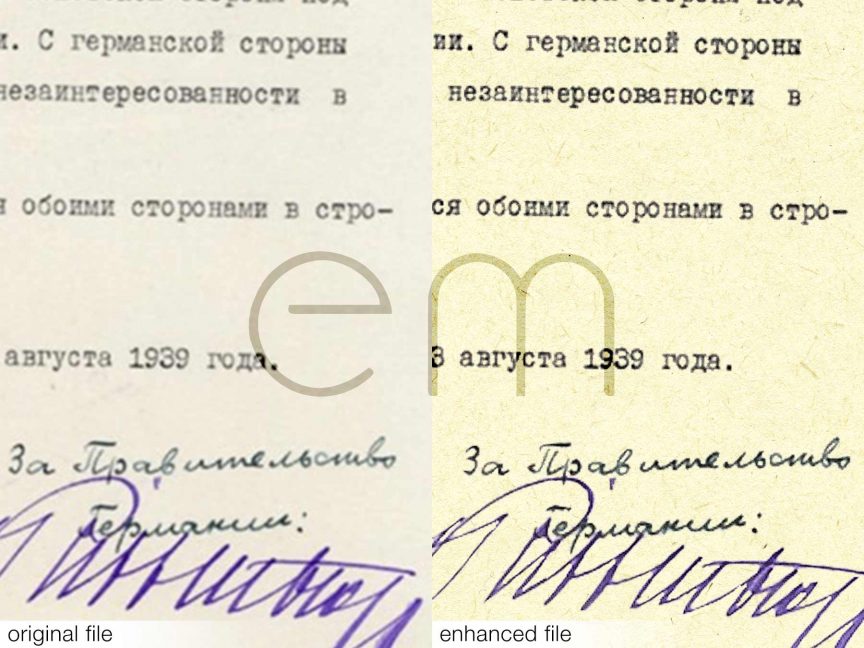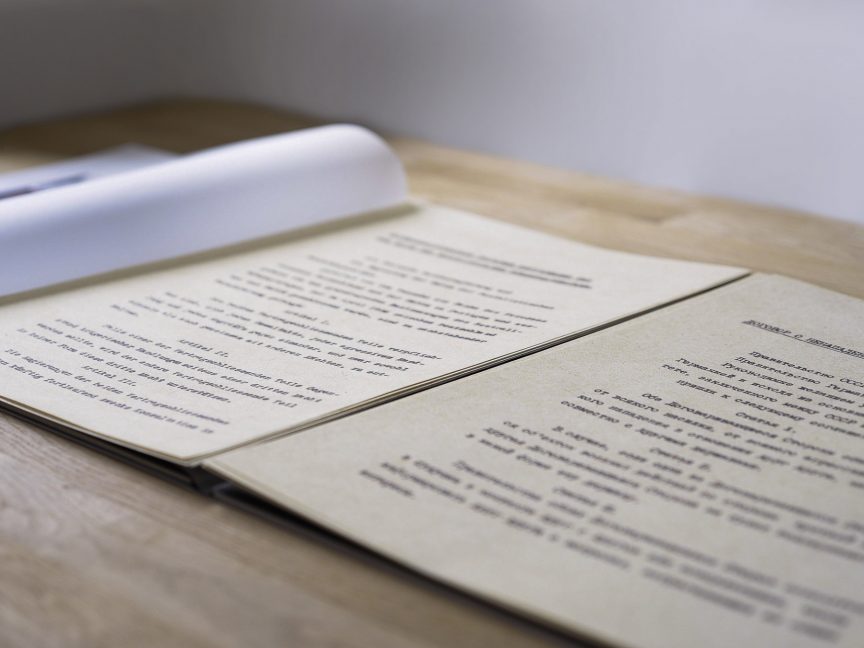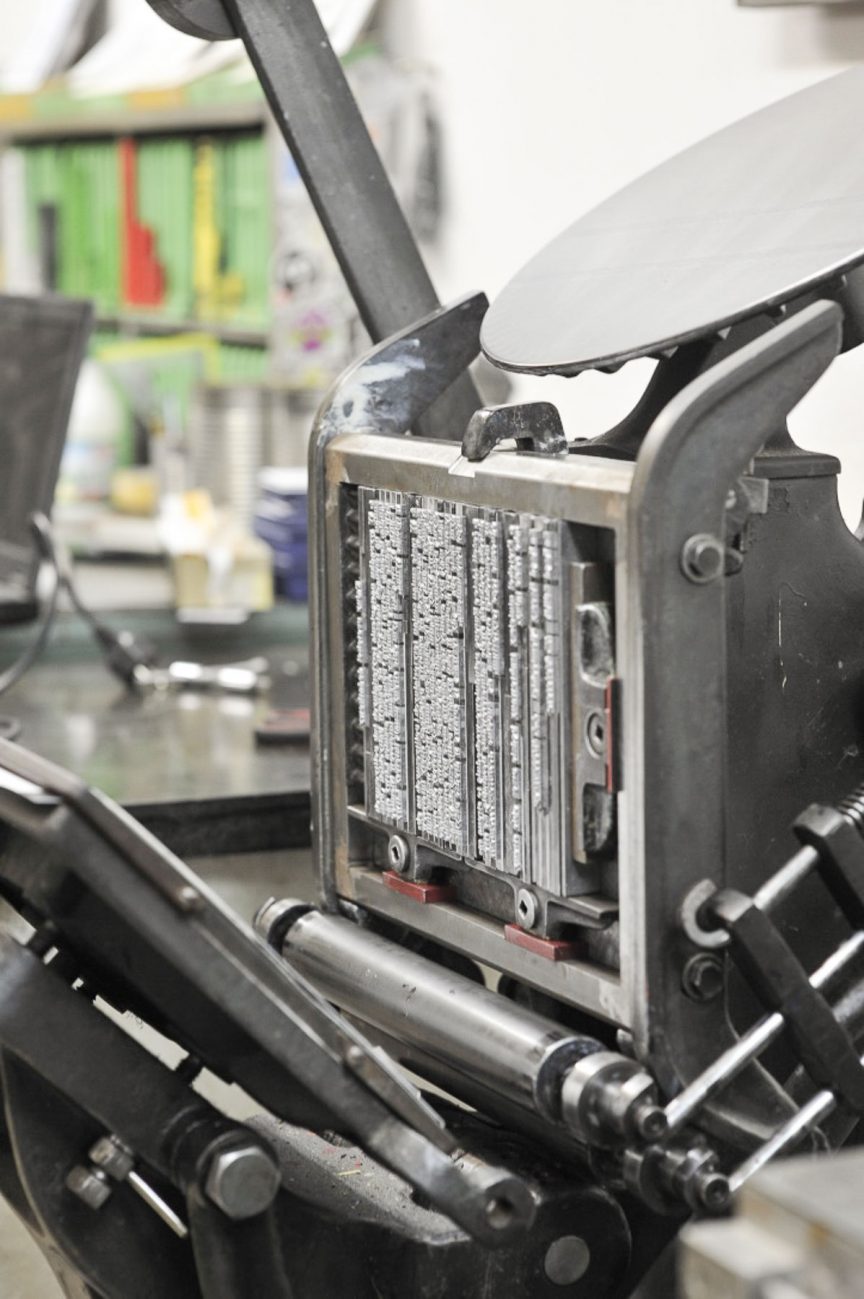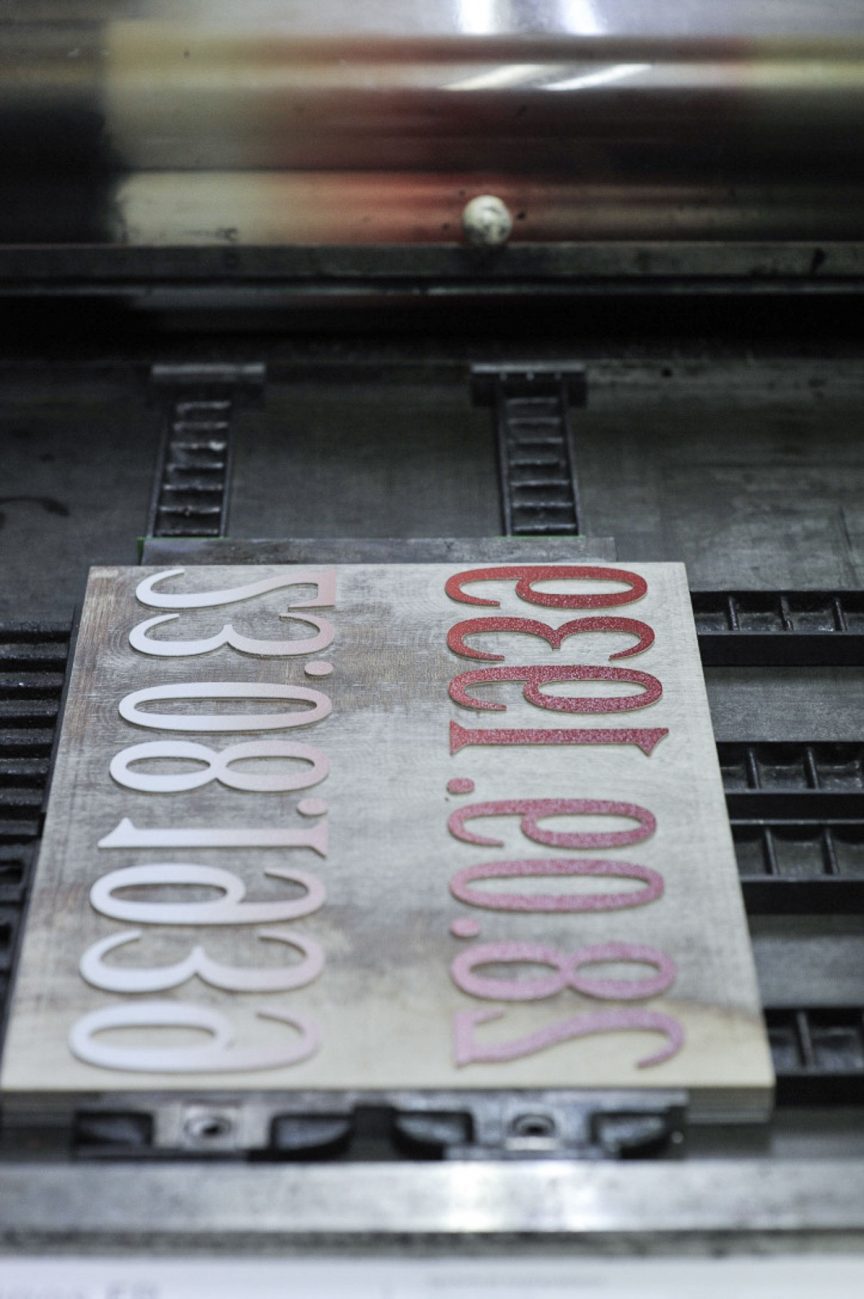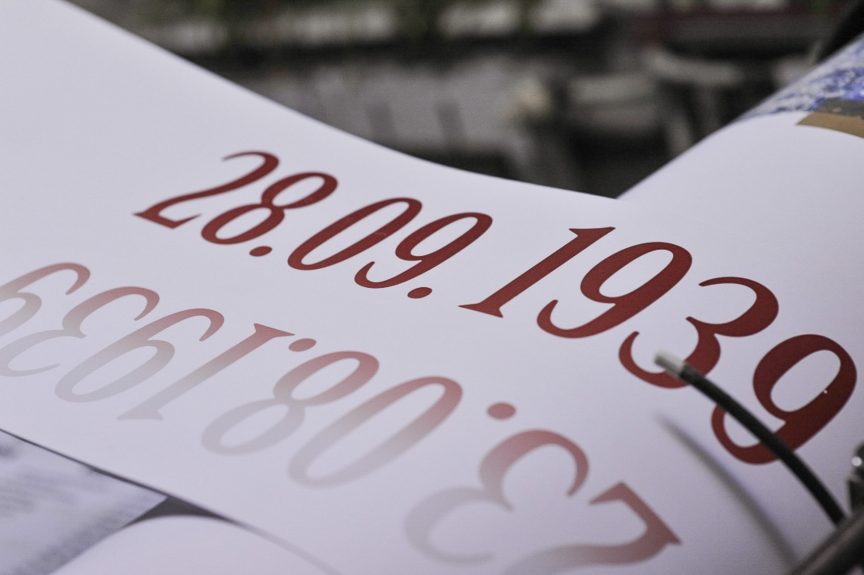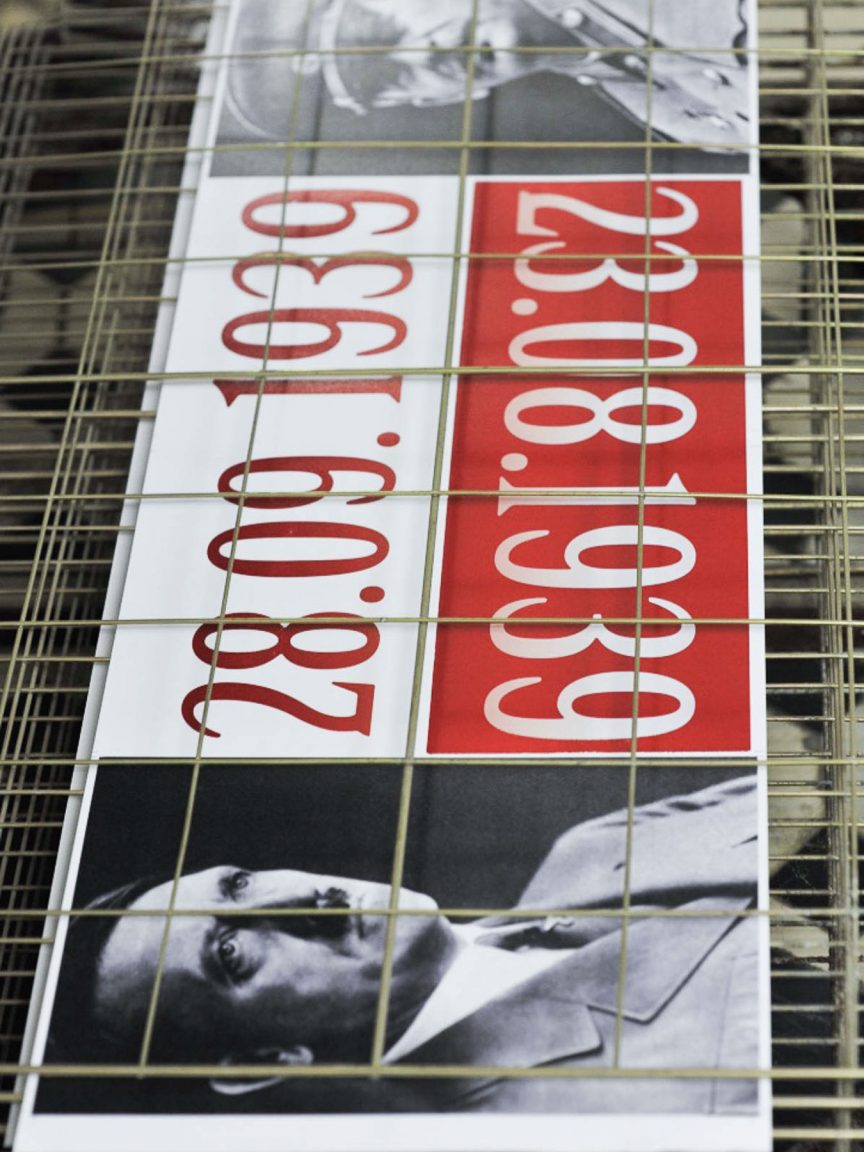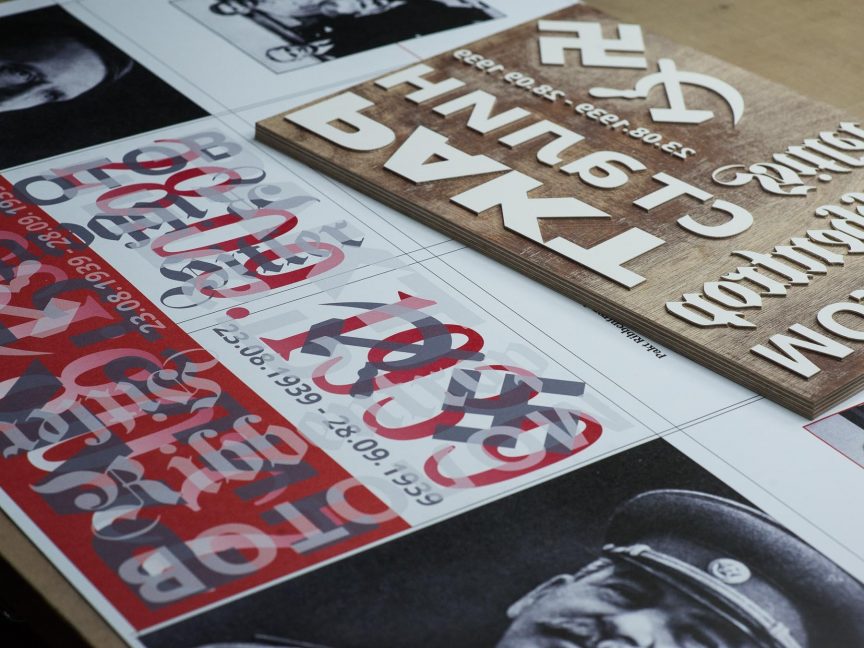Molotov – Ribbentrop Pact
reproduction of archival documents
Execution: Book Art Museum, Lentimax, em
The first stage was the extraction of the background while keeping all the important informations for the document, such as seals, signatures, smudging etc. Next, we have sharpened the part that is important for us, so that it will be further interpolated and transformed to create the most natural and desirable effect. As a background we used a scan of paper from the period with natural aging effects. Because the sheet was larger, each document contains a different slice to make the substrate from sheet to sheet more credible.
After the application, the document was folded in terms of entry / exit levels, so that the letters would give the most natural effect of typemachine. When it comes to tones, the whole has been colorfully adjusted, taking into account the print of the warm and rough substrate on which the printout was made.
We made the print in modern HD technology on the HP Indigo 12000 HD machine with a screen ruling of 290 lpi. This, along with special separations, guaranteed the lack of rosettes and excellent print smoothness, which is completely imperceptible both optically and under the finger.
A cover for the document is a separate creation. In a masterful way it was made by Janusz Tryzno from the Book Art Museum and Paweł Tryzno from Lentimax. The outer part of the cover is a typographic print made on a proofing machine. Due to graphic elements, the matrix was milled on a plotter. The inner part of the cover and tracing paper are printed on a flat UV plotter. Additional sheets, containing the Polish language version of the document, were printed on letterpress, which is a manual typographic press. The text was composed of a font and the print was made on paper colored in bulk.
The whole is bound in a plexiglas box with milling in shape of swastika combined with a sickle and hammer.
printer: Mimaki UV, 2x letterpress, milling plotter Kimla, HP Indigo 12000 HD,
manual bookbinding


